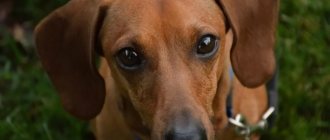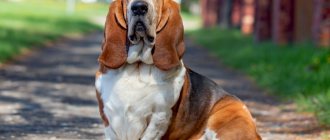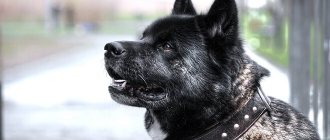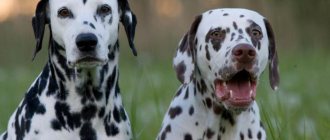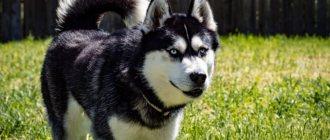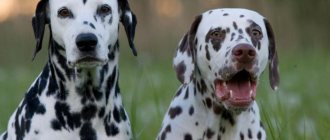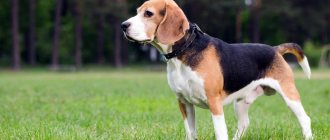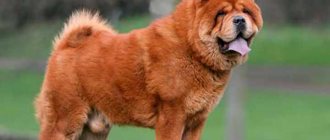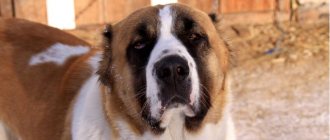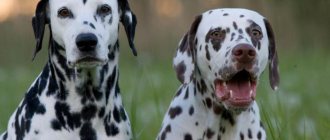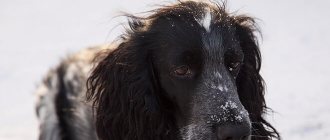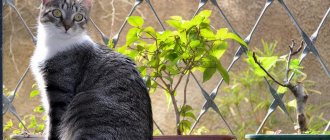According to the method and object of hunting, all four-legged hunters are divided into 5 groups. The largest of them are the gun ones, which are located not far from the owner at the time of the shot. It includes almost all types of spaniels, photos of which you can see below.
Despite excellent working skills, the demand for these dogs has fallen sharply due to the massive introduction of restrictions and bans on sport and amateur hunting. The changes bypassed only those who successfully retrained as a companion or were one initially.
English cocker spaniel
This species was bred in England in the 19th century and was intended for hunting game. The spaniel turned out to be well-built, muscular, its height reaches 36 cm, and its weight reaches 10 kg. The dog can be kept in an apartment, but it is important to take it for walks often and exercise it physically. The Cocker is very affectionate and sociable, gets along well with children. Even an inexperienced owner can keep a pet. Kennels where you can buy a cocker:
- Pride of the Urals (Ekaterinburg);
- Alfa Gold (Moscow);
- Kingdom of redheads (Krasnodar).
The price for a puppy starts from 5,000 rubles. In this case, the offspring of titled parents will cost at least 10,000.
History of the origin of the breed group
There are 3 versions of the origin of the breed. Less popular ones include Roman and Celtic. According to the first, dogs came to England along with the ancient Romans, and according to the second, along with the Celtic tribes.
Most dog handlers are inclined to version No. 3, according to which the animals were bred in Spain during the Middle Ages. It was from there that they spread to other European countries, including England.
This version is confirmed by the treatises of the English nobleman Edward of Norwich, a favorite of Richard II, and the English physician John Caius, who stood at the origins of one of the Cambridge colleges.
Despite the fact that the first written mentions of spaniels date back to the 14th century, their breeding began only in the 18th century. The idea of creating their own breed was taken up not only in England, but also in adjacent France, Germany and Holland. In the 19th century, 5 main varieties were presented at the exhibition, which were adapted to hunting in different areas and for different game.
Russian Spaniel
It arose through the efforts of breeders who tried to adapt the breed to Russian conditions. It has an elongated body and long legs, making it easy to gallop. The smoothest of all representatives of the breed. It is distinguished by its endurance, therefore it is a sought-after hunting dog. It is not advisable to keep it in an apartment, as the animal needs to move a lot. The optimal place for it would be a private house. List of kennels selling Russian spaniel:
- Dakel Tessa (Moscow);
- Forest Hunter (Moscow);
- New generation (Kyiv, Ukraine).
The price for a puppy starts from 6,000-8,000 rubles.
Diseases and health problems
There are no serious genetic diseases observed in Russian spaniels, but they are susceptible to various types of infections, like all other four-legged animals. Those dogs that frequently dive under water while hunting can become infected with leptospirosis, a disease that affects the liver and kidneys. Various fungal diseases and parasitic infections are also not alien to spaniels (dermatomycosis, helminthiasis, toxoplasmosis).
Due to their long, floppy ears, spaniels often develop otitis media. Those dogs that often swim in ponds suffer from it much more often, because water can get into the ear canal, leading to inevitable inflammation. These dogs, like people, are prone to quickly gaining unnecessary pounds and getting fat, so you need to keep their diet balanced. It is not uncommon for spaniels to have allergies to various foods, so you need to select food very carefully.
It is worth remembering that all diseases can be stopped or completely prevented. To do this, you need to be more attentive to your dog. Carry out frequent inspections of its appearance, monitor the proper condition of the coat, and prevent its tangling and formation of tangles. The mood of your four-legged friends is also important. If the dog is experiencing any anxiety, it may become nervous or depressed, all of which should always be monitored with maximum care and patience.
Regular preventative examinations at the veterinary clinic also play an important role in the well-being of your pet. Timely completion of all necessary vaccinations, vaccinations, deworming and treatment for parasites will ensure that your furry pet will delight for many years, bringing a lot of wonderful and unforgettable emotions.
American Cocker Spaniel
The ancestor of the American Spaniel is considered to be the English version of the breed. The American is smaller in size, and its distinctive feature is its sculpted head. It has long soft fur. The most common colors are black, fawn and chocolate. This type of spaniel is easy to train, as it has great natural intelligence.
The American Spaniel is considered a long-liver among its relatives. Its lifespan can reach more than 15 years.
Nurseries:
- Redwind Show (Ekaterinburg);
- Evelweiss (St. Petersburg);
- Bonisher (Nizhny Novgorod).
The price for a puppy starts from 15,000 rubles. For this amount you can purchase an animal without a pedigree and not ready to participate in exhibitions. Titled spaniels can cost from 30,000 rubles.
Character traits
All ancient and modern types of spaniels differ in the shape of the sternum, height, color and external characteristics. The breed has a strong skeleton, a medium-sized body, well-developed muscles, an arched chest, and a rounded skull. The forehead smoothly transitions to the nose. The eye shape is oval. The business card is hanging ears with a wide fit.
Popular types are American and English. Dogs have similar external characteristics and disposition. Training and education are carried out according to the same scheme. The American branch of the family can be recognized by its silky long coat and round head.
Americans are 2-3 cm shorter than the British. The latter have short hair and long paws, which help them get into hard-to-reach places and thickets. There are no height limits; the main criterion is weight – no heavier than 15 kg. For both types of spaniels, proportion is more important.
Tibetan Spaniel
The history of this breed originates in China. Dogs reach no more than 6 kg, and their height is about 24 cm. Tibetan spaniels do not trust strangers too much, but they are very attached to their owners. The pet will cope well with the role of a security guard; some representatives even participate in fighting competitions. In general, dogs are cheerful, playful, and enjoy engaging in various types of physical activity. Nurseries:
- Pearl of Ingria (St. Petersburg);
- Sadko Gems (Moscow);
- Vilex Spence (Solnechnogorsk, Moscow region).
The cost of a puppy with an impressive pedigree can cost 40,000-45,000 rubles.
There are few nurseries in Russia that breed Tibetan spaniels. Fans of the breed have to purchase them in Finland or Estonia.
Springer Spaniel
It is one of the oldest hunting breeds bred in England. The large weight of the dog allowed them to easily catch animals, hunting hares or birds. They can reach up to half a meter at the withers and weigh up to 22 kg. Despite their hunting abilities, the animals are balanced and not prone to aggression. They get along well with small children and can even become nannies for them. Nurseries:
- Veraspring (Moscow);
- Foxberryhills (St. Petersburg);
- Spring Chase (Kaluga).
The average price of a puppy is 30,000 rubles.
How to choose a puppy
- Always give preference to club puppies. When purchasing a Russian hunting spaniel from an unknown breeder, you risk running into a sick animal, or even a mixed breed.
- Review field certificates of litter producers, if available. If the puppies' parents have never worked with poultry, their offspring are unlikely to show good hunting abilities.
- Before purchasing, visit the nursery several times and evaluate the conditions in which the puppies are kept. Be sure to watch the animals have lunch. If babies eat sluggishly or refuse food, there is clearly something wrong with them. The correct Russian spaniel absorbs food at the speed of sound and rattles the empty bowl for a long time.
- At two months old, the Russian Hunting Spaniel stands firmly on its feet, runs well, and with all its soul craves games and adventure. If the puppy moves awkwardly and is in a state of permanent reverie, most likely he is unhealthy.
- Choose puppies with a distinct hump on the nose. This is a sign that the animal's muzzle will lengthen as it matures. Snub-nosed and straight-nosed individuals in 99 cases out of 100 grow up with short muzzles, which is regarded as a defect.
- In a puppy pack, one or more leaders always stand out. These are the kind of kids that avid hunters should take.
- Russian Hunting Spaniels are tested for courage in traditional ways: by clapping the hands forcefully in silence or by turning the puppy over on its back and holding it in that position. Children with hunting inclinations naturally react to noise, and respond to physical pressure with calmness or outright anger. Individuals who are weak from a psychological point of view in both cases simply give in. Another type of test is waving a cloth in front of the spaniel's nose. Leading puppies do not miss such “prey”, grabbing it with their teeth in the very first seconds.
Welsh Springer Spaniel
Another representative of spaniels, whose homeland is England. Presumably it was bred back in the 17th century. This strong, noble dog can reach up to 48 cm and weigh about 20 kg. The classic color is white with large red spots. Animals are smart and friendly. They make contact easily and are easy to train. They are good with children and other pets. The dog is not very popular in Russia, so a small number of nurseries are engaged in breeding it. Among the most significant are Halennest (St. Petersburg). The price for a puppy varies from 5,000 to 35,000 rubles.
Maintenance and care
In his heart, every Russian spaniel dreams of a cozy rural house with a large yard, a garden plot and a small forest nearby, where he could satisfy his intelligence instincts and enjoy interesting smells. However, this does not mean that the dog should huddle in a rotten doghouse waiting for your invitation to hunt. Yes, in the warm season the pet will willingly spend the night in the yard, under a canopy, but in severe frosts its place is in the house. By the way, if you are afraid to get a Russian hunting spaniel because it will bully poultry, then it is completely in vain. The breed is indifferent to ducks, chickens and other agricultural birds.
With a sufficient number of walks and systematic hunting trips, Russian spaniels easily take root in city apartments. Of course, in such conditions it is more difficult with an animal, given the breed’s passion for pranks and chewing wires, but in general a peaceful neighborhood is possible.
Hygiene
The breed sheds seasonally, but individuals living in apartments shed hair in portions throughout the year. In puppies, the first adult coat appears at about 8-9 months of life. By this time, the baby's fluff begins to gradually come out, which is why the baby looks funny, but not very aesthetically pleasing. To encourage dog growth, shedding adolescents are combed daily with a short-tooth comb. It does not injure the puppy's delicate skin and catches fluff well.
You should brush the coat of an adult Russian Spaniel at least once a week if you have a modest representative of the working line, and every other day if you are the happy owner of a show-class dog. To make combing easier, you can use special sprays or a homemade acid-based conditioner (a tablespoon of vinegar/citric acid per 1 liter of hot water).
Many Russian spaniels have hair on their heads that grows in a cap or tuft, which is contrary to the requirements of the standard. For hunting dogs, this feature does not matter, but for show dogs, the skull will have to be plucked to hide the defect. It is also better to remove curling strands above the base of the ear cartilage (trimming knife and your own fingers to help), as they create the illusion of high-up ears.
Grooming of Russian hunting spaniels is strictly contraindicated by standard. Nevertheless, many owners cut their dogs' hair to hide minor defects and make their advantages more visible. Ideally, the haircut should be done by an experienced groomer and at least a month before the exhibition. We can only recommend that those who like to work with scissors on their own not get too carried away and turn a Russian spaniel into an English cocker. Tribal commissions will not appreciate such creativity. In addition, the tail dewlap, the backs of the legs and the underbelly should not be trimmed. Extreme care should also be taken with the ears, neck and chest, since making the correct transitions between them and untrimmed areas is the height of skill, which not every groomer can do. The best option for both working and show dogs is a hygienic haircut, during which the hair brushes between the toes and the hair under the tail are shortened.
You can give a Russian hunting spaniel a bath once or twice a month, but unscheduled baths when the dog has rolled around in carrion or mud are also possible. Washing the wool is carried out according to the classic principle: apply a suitable zoo shampoo to the dog and wash it in the shower. The next step is rubbing a softening balm or cosmetic oil into the coat, which will make drying and combing easier after washing, and also minimize the occurrence of tangles.
The long ears of the Russian Hunting Spaniel are cleaned 1-2 times a month and aired daily. To “ventilate” your pet’s ear canals, pull out the tips of the ears and shake them slightly. The breed's eyes are healthy, without a tendency to sourness and inflammation, so preventive rubbing with chamomile infusion once a week is sufficient for them. Nail trimming is carried out once a month, but in each individual case the period can be reduced or increased. For example, in dogs that walk and exercise productively, their claws wear down when in contact with hard surfaces.
Walk
Take your Russian Spaniel outside twice, or better yet, three times a day, and he will be immensely grateful to you. But don’t forget, in order to let off steam and explore all the interesting places, he needs much more time than any companion breed. To be more precise, going out for half an hour is not about spaniels. A standard dog walk should last at least an hour or two.
Like all puppies, Russian hunting spaniels begin to be walked after the first vaccination, and for up to six months the dogs are taken out to breathe air in their arms (relevant for apartment pets) so as not to spoil the position of their legs. Be sure to use a leash, which not only controls the movement of the animal, but also helps in the formation of correct posture.
Away from highways and crowded places, you can give your spaniel more freedom by letting him off the leash. However, you should not completely trust the dog. Firstly, because the breed loves to pick up foods from the ground that are not the most beneficial for its health, which can be accompanied by severe poisoning. And secondly, because, like any self-respecting hunter, the Russian spaniel loves to camouflage itself. And he does this in the only way available to him - by wallowing in carrion and excrement. So, if you don’t want to bring back a killer scent from your walk, vigilantly monitor the actions of the prankster, keeping a leash at the ready.
Feeding
The Russian Hunting Spaniel is a dog that is ready to have lunch every hour, or better yet, without breaks at all, so you should listen to your pet’s wishes less often, relying on standard nutrition standards. The classic serving size for an adult animal leading an active lifestyle is about 40 g of dry food per kilogram of body weight. If this is liquid natural food, then the ratio should be 30-60 g/kg. Increasing caloric intake and food volume is only permissible for dogs embarking on the path of recovery after an illness, lactating bitches, and also in winter, if a four-legged pet lives in an enclosure.
Twice a month the pet is supposed to unload. The Russian spaniel, of course, gets food these days, but the size of his usual portion is reduced by 60%. As for the products included in the dog’s menu, it is usually beef, which is given 2-3 times a week. The meat is divided into two parts and half is fed raw, and the second is subjected to heat treatment and only after that is given to the animal.
It is better not to give a bird caught during a hunt raw, so that the dog is not tempted to deal with the birds on his own, instead of returning them to the owner. Otherwise, the Russian spaniel can do everything that other breeds can: 4 times a month - boiled sea fish fillet, twice a week - low-fat sour milk, daily - oatmeal, millet and rice porridge cooked in broth or milk.
Don't skimp on fiber-containing foods. For normal intestinal function, the Russian Hunting Spaniel requires 20 g of food with a high content of plant fibers daily. The breed especially respects carrots, pumpkin (acts as an anthelmintic) and potatoes (offer them only boiled and in small quantities). Finely chopped greens and added to porridge are ideal as a natural dietary supplement: spinach, parsley, dill, sorrel.
Once a week, a Russian hunting spaniel can be “rewarded” with a chicken egg, but it is better to give it mixed with dairy products, salads or in the form of an omelet. Dogs have a very favorable attitude towards rye crackers, which are used as a tasty stimulus in training, and also as a natural abrasive that cleans plaque. You can treat your dog with dried fruits only on special occasions: the spaniel must understand that such food is a delicacy that still needs to be earned.
How to feed a Russian Hunting Spaniel:
- 1.5-2 months – 6 times a day, every 3 hours;
- 2-3 months - 5 times a day;
- 4-5 months - 4 times;
- 6-7 months - 3 times a day;
- from 12 months - 2 times.
Welsh Springer Spaniel
It is considered one of the most ancient breeds. Some believe that dogs appeared in the ancient times of the Romans. The breed is somewhat smaller in size than English springers, their weight reaches 20 kg. The Welsh Spaniel is a good hunter who knows how to navigate in a body of water. The dog has a perky disposition, is friendly and fits perfectly into any family. Due to the fact that the breed is not very popular in Russia, only private individuals are involved in its breeding here. The average price of a puppy bought secondhand is about 10,000 rubles.
Video
* We invite you to watch a video about the Russian Hunting Spaniel . In fact, in front of you is a playlist in which you can select and watch any of 20 videos about a given dog breed by simply clicking on the button in the upper right corner of the window. In addition, the material contains quite a lot of photos. By looking at them you can find out what a Russian Hunting Spaniel looks like.
In this article:
|
Irish Water Spaniel
One of the largest representatives of the spaniel breed. The height of these dogs reaches 59 cm and weight up to 30 kg. They have soft fur, covered with curls and creating a kind of cap on their head. Such an animal should not be owned by inexperienced owners, as caring for it can be problematic due to its unusual coat. Irish dogs need constant long walks and plenty of space, so it is best to keep them in a private home. The breed is more popular abroad, so future owners have to travel to other countries. Among the nurseries we can highlight:
- Jaybren & Tierah (Washington, USA);
- The Waterspaniel (Wattenbeck, Germany);
- Jocose (Piteå, Sweden).
The price of the animal is 30,000-45,000 rubles.
Among other spaniels, the Irish Water Spaniel is considered the rarest breed.
Rare species of spaniel breed
In addition to the dogs listed above, it is important to mention 8 more. They are less common, but are also recognized by the FCI.
Clumber.
The largest representative from the UK. Its maximum weight and height reach 34 kg and 50 cm, respectively. Clumber is popular among members of the royal family.
Sussex.
Bred in the south of England in the county of the same name. Despite its origin, it is more popular in the USA. Phlegmatic and often used as a companion.
Welsh Springer.
Another dog from the UK. Externally it resembles an English springer. In 2000, the number of registered individuals was only 424.
Field.
Registered by the English Kennel Club as a vulnerable national breed. It has no undercoat and differs from its relatives in its darker color.
Dutch (kooikerhondje).
Originally used by Dutch hunters for goose hunting, it almost disappeared by the end of World War II. Notable for its long tail with luxurious feathering.
Irish merman.
The oldest representative of the aquatic group with the greatest height at the withers (51-59 cm), exceeding the Clumber. It has a thick and stocky build and a curly coat with a distinct purple tint.
American merman.
One of the symbols of the state of Wisconsin. Notable for its very dense coat, consisting of many curls. It was bred to hunt game birds. Not afraid of cold water and dampness.
Tibetan.
Another dog from the decorative group. Not related to the European varieties, but strongly resembles the English Toy Spaniel.
Rare varieties are mainly represented in their homeland. These individuals are few in number and are not in demand abroad.
Clumber Spaniel
The largest variety of the breed. The weight of an adult male can reach 40 kg, and the height at the withers is 50 cm. Despite the impressive, menacing appearance, the animals have a calm character, sometimes they are even lazy. They are slow and leisurely, so they are well suited for children and the elderly. Clumbers get along well with other animals. Their lifespan is 10-15 years. Nurseries:
- White Volcanoes (Kaliningrad);
- ZOOMIR (Moscow);
- Ten Strike (Magnitogorsk).
The minimum price for a puppy is 30,000 rubles.
Sussex Spaniel
It was bred in England; its homeland is considered to be the county of Sussex, from which the breed is given its name. The dog was born in the 90s of the 18th century. The Sussex Spaniel is considered a small dog, reaching no more than 38 cm at the withers. It has a wavy, thick coat, and its color standard is golden chocolate. The characteristics of the animal mean that it is more inclined to become attached to one owner, but at the same time behaves respectfully and friendly with other family members. Nurseries:
- Russian Sussex Kingdom (Moscow);
- Labry Berry (Ryazan).
- Memfestor'" (Moscow).
On average, the price of a puppy is 19,000-25,000 rubles, but in some cases it can reach 50,000.
Varieties and description
Spanish dogs are among the best hunters in the world. Recently, the group has been replenished with new varieties of spaniels suitable for ornamental cultivation. Each representative differs in appearance and character.
Before choosing a breed subspecies, it is better to consult with dog handlers and study all the varieties in more detail.
English
A lively, cheerful spaniel loves to wag its tail. This is a faithful, devoted friend for all family members. The dog easily learns new commands, is flexible and intelligent. Loves company and attention. He begs for tidbits and affection with the help of the charm of his expressive eyes.
Interesting article: Cocker Spaniel haircut: grooming American, English and Russian Cocker Spaniel
The Cocker Spaniel has a square body and a rectangular muzzle. The limbs are short, powerful, covered with hair. The cover is long, silky, soft, reminiscent of hair. The color of the breed is solid, types are roan, black, spotted. The height of males is 39-40.5 cm, females are 1 cm shorter. Weight is no more than 14.5 kg, but not less than 12.7 kg. What is the difference between American and English cocker spaniels, read this article.
Interesting article: Nicknames for spaniels for boys and girls: 100 best nicknames for a puppy
American
The smallest hunting individual, height does not exceed 38 cm at the withers. The dog was bred thanks to the fusion of two types - English and American. The first puppies were born in 1620, when there was no USA yet. They were brought there by the first settlers.
Such dogs have a strong body, an elegant elongated neck, and a proportional head. The front legs are straight, in contrast to the curved, dry hind legs. The body coat is silky and of moderate length.
Variation in the color of the breed: uniform from light fawn to dark red, black or dark with a small amount of whitish hairs. There is a mixed type, where 2 or 3-4 shades overlap. Friendly character, companion for owners.
American merman
A universal hunting dog that can save people in water and on land. Bred in the United States. Friendly, energetic, easy to train, copes with home security. Has increased intelligence.
The spaniel has a muscular build, with an average height of up to 46 cm. The head is round. The sternum is deep and not wide. The loin is strong and arched. The coat is curly, laid in thick rings towards the body. The color is uniform, from dark brown to deep chocolate.
English Springer Spaniel
The largest representative of the group. It grows up to 50 cm in height. The dog's weight is a maximum of 23 kg. The progenitor is the Norflock Spaniel, which is not inferior in size to the Setter.
The body is dense, the chest is deep. The skull is large with a rectangular muzzle, a clear border from the forehead. The fur is medium in length, smooth. The standard allows for many variations in the color of the breed. The most common are white spaniels with black, red, and brown spots. Good character. The dog is full of energy and active. Pliable, smart. She gets along well with children and you can trust her with kids.
Welsh Springer
Strong, hardy, noble English breed of spaniels. It grows no higher than 48 cm. Body weight rarely reaches 20 kg. The first representative was born in the vastness of Great Britain back in the 17th century.
It has a compact but strong body with protruding chest. The skull is dome-shaped with a medium snout. The cover is soft, thick, straight, short for protection from water and cold. The color of the breed is fiery and white.
This is an obedient, smart friend, a hunter. But it is important to raise such a dog correctly or there will be problems with its behavior. She loves animals, children, and is quick-witted and intelligent.
Irish merman
Heavy, large. Height ranges from 59 cm. The spaniel's weight reaches 31 kg. A representative of this species is recognized as the tallest in the spaniel family.
The breed has a stocky, dense body. The head is of medium proportions with an elongated nose. The ears are large, hanging, covered with hair. You can find dogs with bangs and a beard. The body is hidden under soft curls of chocolate color with a red tint.
These are active animals that need regular exercise. They are bred for hunting and long journeys; they are not suitable for people with a measured lifestyle. Quiet, calm animals become attached to their owner, but sometimes they can be aggressive and cowardly.
Cavalier King Charles
The oldest representative of the breed. I'm used to sleeping on top of royal silk sheets. Ideal for families with children and elderly people. He is active, but knows how to adapt to his environment. Cheerful, sociable.
Spaniels are small, only up to 30-33 cm at the withers. Weight – no more than 8 kg. The body is a regular square, compact. The muzzle is narrowed, the head is flattened on top. The ears are set high, hanging down, and covered with wavy hair. The standard color of a dog is of 4 types: white with red, black, brown, dark with light tips, ruby.
King Charles
Decorative looking spaniel, ideal for an apartment. Small in stature - up to 29 cm, does not gain more than 6.5 kg. It differs from the previous species in its stocky, dense build with a concave chest. The head is round, the muzzle is wide and short.
The coat on the body is straight. Colors of the breed 4 types. Does not require special care. The dog needs jogging and long walks.
Clumber
One of the most powerful spaniels. Heavy – weighs 25-34 kg. Tall – 50 cm at the withers. Appeared in England. He has a calm character and is flexible.
The body is elongated, stocky, massive. The dog's skull is large with long, voluminous ears. Muzzle with a sleepy expression. The animal is covered with smooth, dense hair, which lengthens on the stomach and paws. The color standard is white with red or yellow spots.
Kooikerhondje
An ancient breed from Holland. Spaniels of this country are filled with energy, playful, active. They love the company of people and are affectionate. They are indifferent to children and prefer to keep their distance. They can drive you away by barking, but they don't bite.
The dog's body is small, square with a protruding chest. Height 40 cm. The head is proportional to the body. The spaniel's neck is long and set high. The ears fall down and are medium in size.
Wool has the properties to repel dirt and water. Doesn't get dirty while hunting. The hair is medium and can be distributed in waves or straight. The color of the breed is white and red.
Continental Toy Spaniel
Small dogs have a playful, cheerful disposition. A specific feature of the spaniel is its size, which does not exceed 28 cm. Weight is only 4 kg. Favorite of the royal nobility.
Oblong body. The muzzle is sharp with a noticeable transition in the forehead area. The eyes are almond-shaped, large, and set low. The hearing aid resembles the fringed wings of butterflies. The coat is thick, shiny white or black and tan.
German Wachtelhund
The breed was created for catching game on land and in water. Grows up to 51 cm. Weight can reach 30 kg. Provider and friend. Easy to learn.
The dog is squat, with an elongated body. The muzzle is elongated, the head is round, the ears are wide and hanging with a high set. The body is decorated with thick wool lying in waves. There are spaniels with even coats. The color is plain brown or with white spots.
Papillon
An ancient and very rare breed. The miniature animal weighs no more than 4 kg and is up to 28 cm high. It is a type of continental toy terrier. Loyal, friendly, obedient spaniel.
The dog's body is long and strong. The muzzle is pointed, thin on a curved narrow neck. Attracts with erect triangular ears with a fringe of hair. The foot looks like a hare's, thin. The coat is flowing and long.
Russian hunting
The breed is the pride of Russian cynologists. Smart dogs are good for keeping at home and serving in the military. Russian spaniels are distinguished by their courage, friendliness and loyalty. Non-aggressive, easy to train.
Interesting article: Russian hunting spaniel: description and characteristics of the breed, character, care and maintenance
They have a medium size, muscular, lean body with strong limbs. Height up to 45 cm, weight between 10-18 kg. The head is medium, proportional with a straight nose. The eyes are deep-set, oval in shape. Plain or two or three colors.
Sussex
An English variety of small dogs - up to 38 cm. A descendant of the Clumber with a soft, easy-going character. The spaniel obeys one owner, but is friends with the whole family. Easily trained, educated, rarely shows stubbornness.
The physique is rectangular, massive with muscles. The head is voluminous with hanging ears with fur. The cover of the body is thick and of medium length. The color of the breed is golden chocolate.
Tibetan
The Chinese subclass of spaniels gave people their best friends. These animals are loyal and very smart. They love to play and frolic. They quickly become attached to their owners and do not welcome strangers. But such dogs do not do well in a closed space.
They reach 24 cm in height and 6 kg in weight. The body is small and compact. The legs are short. The muzzle is shortened. The ears are located high on the head. Coat of different colors.
Welsh Springer Spaniel
An ancient British breed. These dogs are considered good hunters and have a sense of smell. They are agile, active, love to play, and quickly become members of the family. During training and education, they show obstinacy and shirk commands.
The individual is folded symmetrically. Height – 46-48 cm. Head, elongated, dome-shaped. The eyes are bulging and small. The paws are strong and round. The cover is dense and smooth. There are long-haired and short-haired spaniels. Color – white and fiery.
Cavalier King Charles Spaniel
One of the oldest varieties of spaniels, brought to England in the 9th century. There the breed was named in honor of Charles II, who was king at that time. The dogs became popular at court and became a truly royal breed. Gradually they turned into decorative mini dogs; today they are considered to be one of the most beautiful spaniels in the world. Such dogs weigh only 5-8 kg and are no more than 33 cm high. They are well suited for any family, as they are sociable and friendly with all people, as well as other animals. Nurseries:
- Fidelis et Fortis (Moscow);
- Angelgin (Tolyatti);
- Russian pride (Lipetsk).
The cost of a puppy is 15,000-55,000 rubles.
Breed standard
Each variety of spaniel has its own developed standards, which will be discussed later. Next, general features characteristic of representatives of this breed will be presented.
The body is square, and the muzzle is triangular in shape. The head has smooth outlines, the nose is wide.
The main color of the eyes is brown, different shades are allowed. The eyes themselves are large, there is no bulge. The ears hang down and are located at eye level, they have the shape of flaps, while they are completely covered with fur. Dogs have a scissor bite.
The animals have a well-developed, narrow sternum and a medium-length cervical region. The front legs are shorter than the hind legs, but at the same time very powerful, which has a positive effect on the performance of the spaniel. The hind legs are strong, thanks to the knee joints with good flexion amplitude, dogs can move quickly. The paws end in soft pads. Spaniels have a movable tail, which is docked in most cases.
The coat is silky, long, straight, and has no coarse hairs. Dogs' coats can vary from spotted to solid. In the latter case, the presence of white spots is considered a flaw.
Animals weigh from 12 to 14 kg.
Field Spaniel
Another native of England with good hunting qualities. The dogs have a medium build: height 50-58 cm, weight no more than 22 kg. The breed is a waterfowl, so its paws have webbed feet. The main color is black, but small spots of different colors are possible. The Field Spaniel requires constant movement, so it is best kept in a private home. The breed also has good watchdog qualities. Dogs can be bought mainly in foreign kennels:
- The Westminster Kennel Club (Washington, USA);
- United kennel club (Kalamazoo, USA).
The minimum price for a dog is 10,000 rubles, the average cost is 35,000.
Main groups
The first division of the spaniel family into subgroups was carried out in the 8th century by the British. The class indicators were the height and weight of the dogs. Over the centuries, the specific features of the breed became less pronounced, and the breed became famous. As a result, new classes appeared.
During the Middle Ages, there were four categories: security, watch, indoor and hunting. Today, the International Cynological Federation FCI has identified 9 groups. They contain subspecies. The division is carried out according to hunting use and origin. There is a separate category of continental pointers, which includes representatives of the spaniel type, distinguished by excellent endurance and hard work.
And also FCI has allocated two more varieties of the family to Section 7 of the Toy and Companion Dog group. They are King Charles spaniels, Cavalier King Charles. These dogs, amazing in beauty and quality, are kept indoors.
French Spaniel
A small breed, known mainly in its homeland. There its appearance was recorded in the 16th century, but later the dogs were supplanted by their more popular English counterparts. The French Spaniel is balanced and friendly. It is advisable to arrange his maintenance in a private house, but if necessary, he can live in an apartment. He has a natural intelligence and is easy to train. There are currently no nurseries raising animals in Russia. You will have to go abroad to get a French spaniel. There its price is 26,000-40,000 rubles.
Advantages and disadvantages
In the description of the breed, the main emphasis is on the excellent health of the dogs. To maintain it, it is important to properly organize nutrition and care. This pet is friendly and has a perky character. Spaniels are amenable to training and education.
The only difficulty for owners is caring for their ears. Due to the peculiarity of their structure, dirt gets inside, which can become a favorable breeding ground for fleas, microbes, fungi, and ticks. Wool requires special attention. It is recommended to brush it regularly with a soft brush and a rubber mitt.
Wachtelhund (German Spaniel)
Germany is considered its homeland. The dogs bred were universal hunters, able to catch game on land and in water. According to the description, the breed is tall, well-fed, and squat. The main color type is brown, it can be either plain or with white spots. The Wachtelhund is completely devoid of aggressiveness towards people, so the pet can become an excellent companion for the whole family. The average lifespan of dogs is 12-14 years. Nurseries:
- Deutsche Wachtelhund (Moscow);
- Oberlauf (St. Petersburg").
The average price of a puppy is 15,000 rubles.
Photo and video review
The beauty and nobility of spaniels is clearly visible in the photo. The ears are the main distinguishing feature of the breed. They are varied in shape, length and attract the attention of others to the dog. All types of spaniels are reliable friends and companions. Energetic, playful dogs quickly become family members. But their character manifests itself during hunting and hiking. It doesn’t matter who in the house is a hunter or a representative of a decorative breed, he will delight you with his devotion, complaisance and intelligence.
Dutch Kooikerhondje Spaniel
A small breed, reaching 11 kg and 40 cm at the withers. Initially, dogs appeared for water hunting, so their coat has a water-repellent function. Kooikerhondje are indifferent to other animals and children and are not aggressive. They require increased physical activity, hiking in nature and swimming in natural reservoirs. It is difficult to purchase dogs in Russia. Breeders rarely breed this breed, so you will have to go abroad to get it. The only accessible nursery is Ostrov on the Neva (St. Petersburg). The cost of a puppy is quite high, on average 60,000 rubles.
Despite the numerous varieties of the breed, all spaniels are united by a love of movement and hunting habits. Therefore, it is important to constantly educate and train the animal in order to make it an obedient pet. Representatives of the breed are well suited for active people who are ready for long walks and active games with their pet.
Pros and cons of the breed
Any breed has its positive and negative sides, the same applies to spaniels.
Advantages and disadvantages
| Positive traits | Negative qualities |
| Small sizes | Gluttony |
| Activity | Improper socialization leads to aggressive behavior and cowardice |
| Endurance | Having ear problems |
| Good travel tolerance | The appearance of mental problems when being alone for a long time |
| Ease of training |
Beagle dog breed with photos and descriptions
